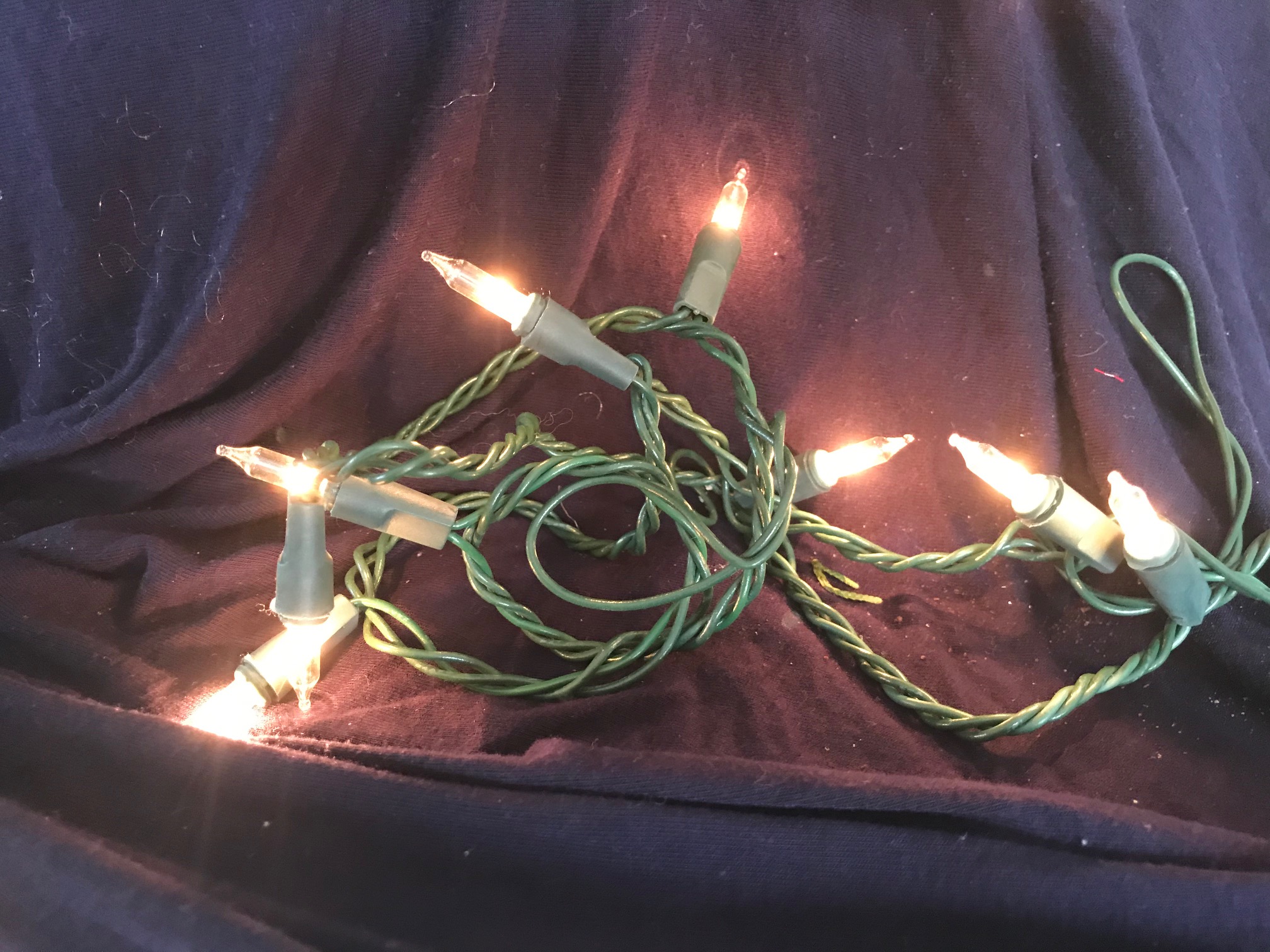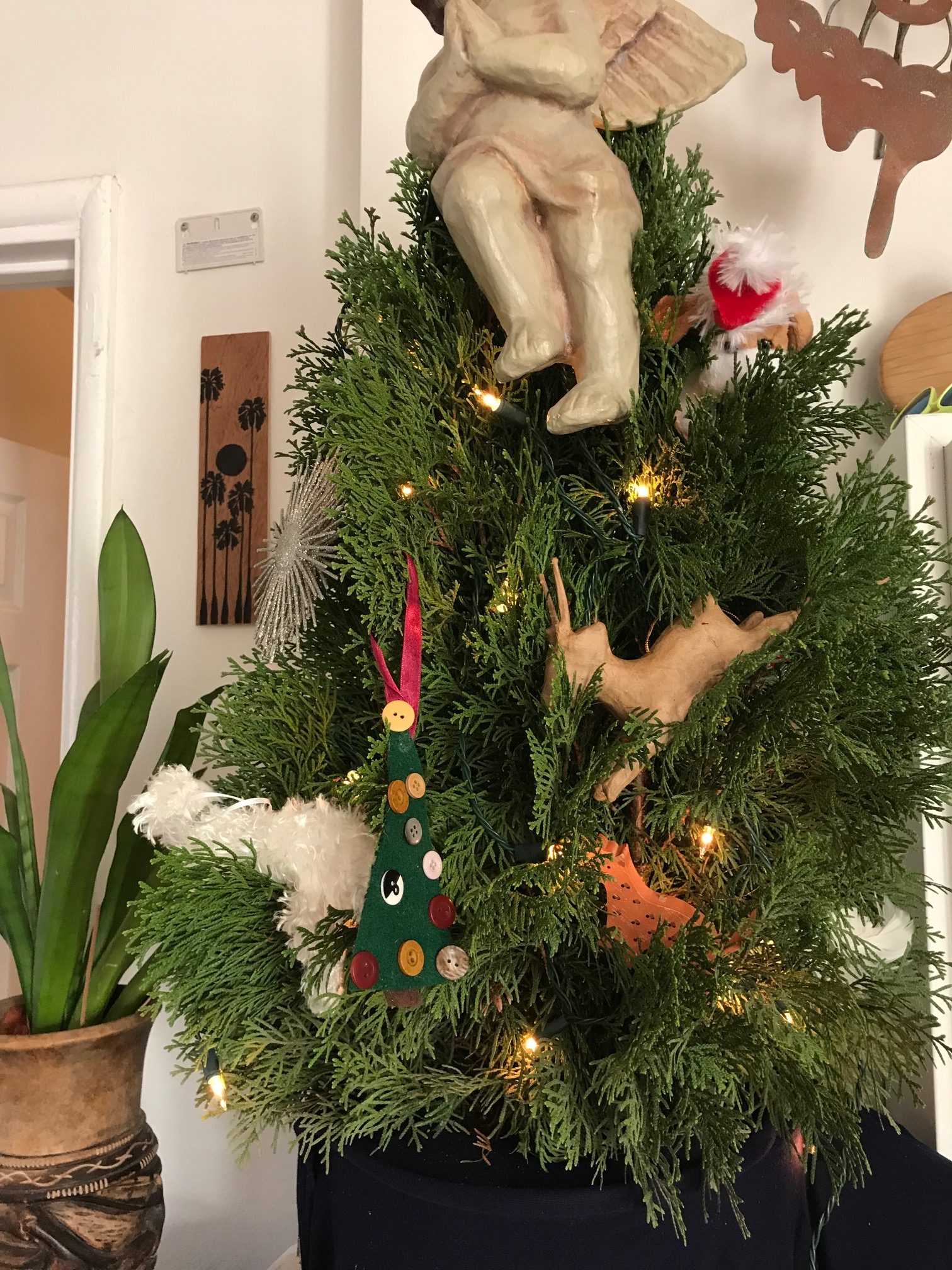Plug-in Christmas Lights c. 2008-2013: 15,300 ppm Lead (90 ppm is unsafe for kids). Here are some tips for choosing safer Christmas lights.
More Christmas Buttons
(Article & Category Links)
For those new to this website:
Tamara Rubin is a multiple-federal-award-winning independent advocate for childhood Lead poisoning prevention and consumer goods safety, and a documentary filmmaker. She is also a mother of Lead-poisoned children (two of her sons were acutely Lead-poisoned in 2005). Since 2009, Tamara has been using XRF technology (a scientific method used by the U.S. Consumer Product Safety Commission) to test consumer goods for toxicants (specifically heavy metals — including Lead, Cadmium, Mercury, Antimony, and Arsenic). All test results reported on this website are science-based, accurate, and replicable. Items are tested multiple times to confirm the test results for each component tested. Tamara’s work was featured in Consumer Reports Magazine in February of 2023 (March 2023 print edition).
This is an ad-free article.
To make a contribution to help us keep our most widely-read articles ad-free, click here. Thank you.
Published: December 23, 2018
Updated: November 25, 2023
I noticed these Christmas lights at my friend Jess’s house (when I was visiting her in Seal Beach, California in 2018) and tested them. She said she didn’t know exactly how old they were. She did know they were purchased sometime between 2008 and 2013.
Unfortunately, I don’t have a brand name for this lighting strand, however, I do have an XRF reading — and I thought this strand of Christmas lights was a useful example to write about (even without knowing the brand information) as the readings are typical for plug-in Christmas lights made in that time frame.
The Lead level on this lighting strand is especially notable because these lights are not particularly old (not even officially “vintage,” which is typically 20 years old or older), yet are still quite high in Lead. It is even more interesting of an example to share here on the site due to the light strand being purchased in California — a state that typically has stricter regulations for toxicant limits in consumer goods. So EVEN in CALIFORNIA and EVEN newer strands of lights can have components with very high levels of Lead (levels far above the 90 ppm limit for Lead in items manufactured for use by chiildren).
Specific test results for the light strand pictured
The full XRF test result set for the Christmas light strand pictured is below. This is one full set of test results for the plastic/ rubberized cord component of the lights (the electrical cord connecting each of the lights).
- Lead (Pb): 15,300 +/- 700 ppm
- Cadmium (Cd): Non-Detect
- Mercury (Hg): Non-Detect
- Arsenic (As): Non-Detect
- Barium (Ba): 567 +/- 160 ppm
- Chromium (Cr): Non-Detect
- Antimony (Sb): 177 +/- 52 ppm
- Selenium (Se): Non-Detect
The Lead and Antimony found in Christmas lights are generally considered to be bioavailable (on the surface) as they are in (and sometimes applied as a surface coating on) the plastic (which deteriorates with use over time – especially with exposure to the elements, as would be the case with outdoor lights.) You can learn more about that here (by watching the video on this link.)
The test results noted above are typical for the plastic components of Christmas lights (both the little “cups” that hold the bulb and the rubberized strand that connects the bulbs) — regardless of the color of the strands.
I would expect this range of Lead test results (about 15,000 ppm) to be typical for most decorative plug-in lighting strands from 2018 and earlier dates (with older lights likely having higher levels of Lead, sometimes as high as 20,000 to 30,000 ppm Lead).
Recent observations from testing Christmas light strands
(testing done since 2009)
What I am seeing with some of the newer plug-in lights (2018) is that they are often negative for Lead, but positive for relatively high levels of Antimony. Across the board, Antimony has replaced Lead in many applications. Some examples of this include:
- Lead-free pewter tends to be high in Antimony instead of Lead
- Lead-free solder tends to be high in Antimony instead of Lead
- Lead-free electrical tape (and other similar vinyl products) tends to be high in Antimony instead of Lead
- Lead-free crystal tends to be high in Antimony instead of Lead
- Lead-free electrical cords (across the board, not just for Christmas lights) tend to be high in Antimony instead of Lead
Antimony was added to the list of known carcinogens in December of 2021 and given it’s relatively new “status” in this area, is not yet as well regulated as Lead, yet has similar toxicity concerns (at similar levels to the toxicity concerns for Lead exposure). As a result, I recommend never letting children play with these types of lights (new or old, regardless of the Lead content). If children are going to help you decorate your Christmas tree, ideally they should wear gloves when handling lights or ornaments (and NEVER eat or drink while decorating the tree)! If gloves aren’t handy, a thorough hand-washing (with soap, warm water and a wash cloth) is in order (for both adults and children touching these Christmas light strands).
Note: If Christmas lights packaging has a Prop 65 warning the product most often will have Lead. If there is no Prop 65 warning on the box, the product may be Lead-free but will likely have Antimony instead.
Tips for choosing safer lights for your Christmas Tree (& home)
- Avoid all brands of older lighting strands (pre-2018)
- this includes any color of cord and any color of light bulbs
- Avoid all brands of plug-in lighting strands if at all possible
- Any age (new or old.)
- Older plug-in strands typically have unsafe levels of Lead in the rubber and plastic components
- Newer plug-in strands typically have unsafe levels of Antimony in the rubber and plastic components
- Lead and/or Antimony has been added as part of the flame retardant chemical cocktail for many plug-in items that may present a fire hazard (from Christmas lights, to toaster ovens, to floor lamps).
- Choose instead: New (made after 2018) battery-operated “fairy” light strands (any type/ any brand)
- New (2018 and newer) small electric battery powered strands (“fairy light” style) have consistently tested negative (or very low/ within safe range) for both Lead and Antimony.
- Purchase rechargable batteries (the longest-lasting type you can afford) to use with your battery operated light strands — for the most environmentally responsible option! 🙂
- If you must use plug-in lights:
- wear gloves when setting them up (and when taking them down)
- hang (and store) them in areas out of reach of babies, toddlers and young children
- wash hands (with soap, warm water and a wash cloth) after installing
- never eat while decorating your tree/ installing plug-in string lights
- hand-to-mouth activity is the most likely — and most dangerous — exposure pathway for Lead dust that can be on these strands.
As always, thank you for reading and for sharing articles from this website (LeadSafeMama.com/ TamaraRubin.com). Every time you share one of our articles with your family, friends, and greater community, you help grow the movement for childhood Lead poisoning prevention and consumer good safety!
Please let me know if I can answer your questions at all, I will do my best to answer them personally although it may take some time as I have disabled (Lead-poisoned) kiddos underfoot pretty much 24/7 these days!
Tamara Rubin
Owner — Lead Safe Mama, LLC
#LeadSafeMama
~ End ~
Never Miss an Important Article Again!
Join our Email List
























Have you ever tested lights from 2016? Not exactly vintage, but not new either. Hard to decide what to do with all the stuff that we own!
What about the Fairy lights style lights that plug in through a USB plug/adaptor plug?
Thanks for the posting! The information is very critical. Now, I am wondering whether we also need to test the levels of toxic heavy metals on chargers (for cell phones, computers, and any other normal electronics).
Chargers for phones and laptop computers are generally free of Lead, Cadmium, Antimony, Arsenic and Mercury.
Tamara
Thank you for this information. Does it have to be fairy lights or any battery operated lights would likely be fine?
Well, even the battery-operated “fairy” lights I have found actually this 2024 on Amazon, Target , Walmart… contains the Prop65 Warning. I’d like that she recommend to us some brands we can use.
That’s probably not a prop 65 for Lead. Does it say?
My recommendation is to not buy products like these in general. They are terrible for the environment.
T
I thought IKEA plug-in Christmas lights were a “safer”, less toxic choice than any other brand plug-in?